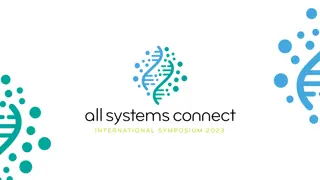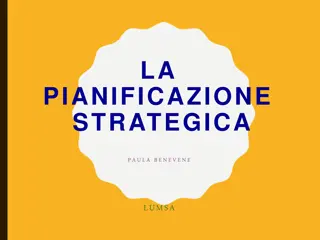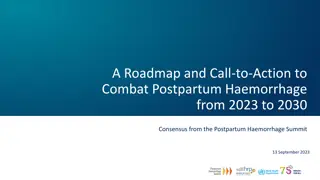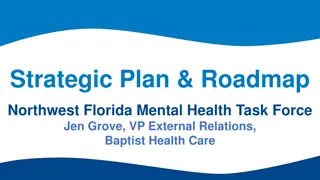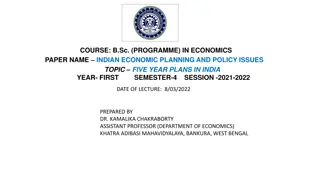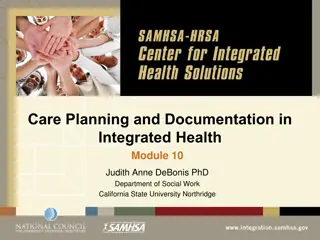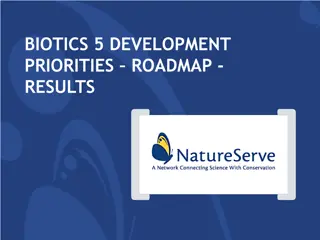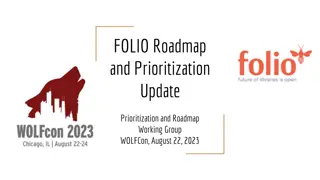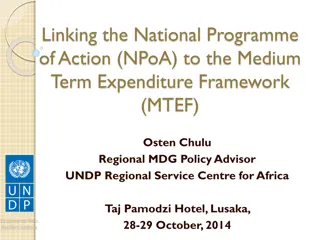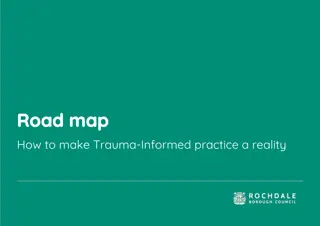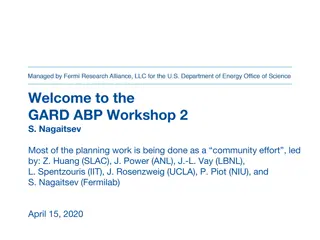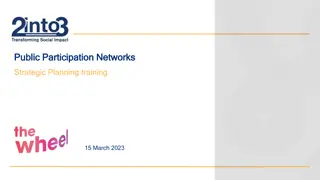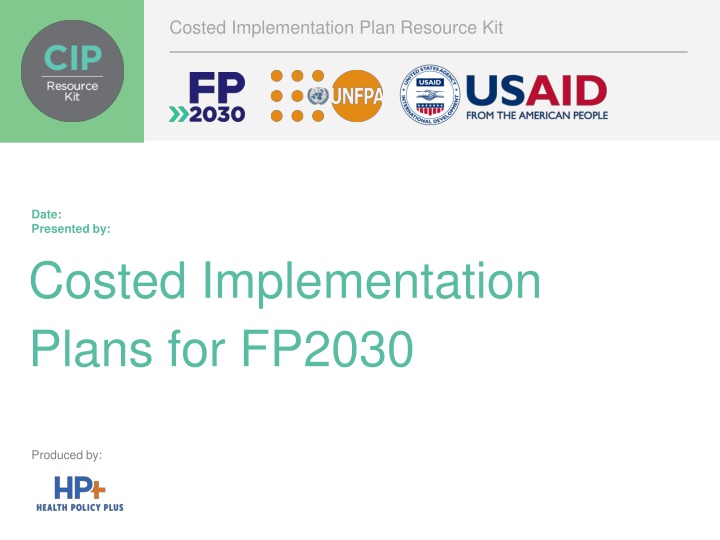
Costed Implementation Plans for Family Planning - Strategic Roadmap and Resource Allocation
A Costed Implementation Plan (CIP) is a crucial actionable roadmap encompassing strategic priorities, interventions, and costing to achieve a country's family planning goals. It facilitates budgetary planning, resource allocation, and monitoring to enhance strategic investments in family planning efforts. CIPs align with existing health strategies, meet individual rights to family planning, and address challenges such as unmet needs, development goals, and FP2030 commitments.
Download Presentation

Please find below an Image/Link to download the presentation.
The content on the website is provided AS IS for your information and personal use only. It may not be sold, licensed, or shared on other websites without obtaining consent from the author. If you encounter any issues during the download, it is possible that the publisher has removed the file from their server.
You are allowed to download the files provided on this website for personal or commercial use, subject to the condition that they are used lawfully. All files are the property of their respective owners.
The content on the website is provided AS IS for your information and personal use only. It may not be sold, licensed, or shared on other websites without obtaining consent from the author.
E N D
Presentation Transcript
Costed Implementation Plan Resource Kit Date: Presented by: Costed Implementation Plans for FP2030 Produced by:
Why Do a Costed Implementation Plan? A CIP is a multi-year actionable roadmap with strategic priorities, interventions, and costing to achieve countries family planning goals. The CIP has helped us to determine budgetary needs to reposition our family planning efforts. Monitoring the CIP is helping us to be more strategic in how resources are invested in the country to get results CIPs are meant to be aligned with and build on existing health strategies and commitments and meet individuals rights to family planning. [Include here any pertinent goals and/or challenges a CIP will help address, e.g., contribution of family planning to country s development goals, FP2030 commitments, estimated number of women with unmet need, etc.] Maurice Hiza, National Family Planning Coordinator, Government of Tanzania www.familyplanning2030.org/cip 2
A CIP promotes Strategic decision making to allocate limited resources Realistic assessment and costing of program requirements Coordination and alignment of donors and stakeholders behind the government s priorities Adherence to programming that respects rights and equity. www.familyplanning2030.org/cip 3
Purpose of the CIP Clarify a unified country strategy Describe strategic priorities and outline an operational plan in coordination with all partners Estimate costs Secure new commitments from partners based on defined needs and gaps Monitor progress [Depending on your needs for the CIP, consider including the following bullet: Estimate demographic, health, and economic impacts of the family planning program] www.familyplanning2030.org/cip 4
CIPs Can Address All the Major Thematic Areas of Family Planning Programming Demand creation Service delivery Contraceptive security Policy and enabling environment Financing Stewardship, management, and accountability Crosscutting areas including innovation or implementation research, adolescent family planning, and rights-based programming www.familyplanning2030.org/cip 5
Countries with Family Planning CIPs As of January 2022, 43 countries have completed at least one CIP, and eight countries have completed more than one Afghanistan Angola Bangladesh Benin Burkina Faso Burundi Cameroon Central African Republic Chad Cote d Ivoire DRC Ethiopia Gambia Ghana Guinea Haiti India Indonesia Kenya Kyrgyz Republic Lao PDR Liberia Madagascar Mauritania Mozambique Myanmar Nepal Niger Nigeria Pakistan Philippines Rwanda Senegal Sierra Leone Solomon Islands Somalia South Sudan Sri Lanka Tanzania Togo Uganda Vietnam Zimbabwe [Update with latest country information] www.familyplanning2030.org/cip 6
CIP Experiences and Results Provide guidance for reaching family planning goals The CIP is a tool that will empower us in Kenya to confidently advocate for investments in FP for the Kenya Vision 2030 with accurate figures of cost and priorities. In fact, the CIP can be referred to as the Bible of family planning program implementation in Kenya Promote greater action, accountability, and advocacy Support expanded services Mobilize resources for family planning Dr. Bashir M. Isaac, Former Director, Division of Reproductive Health, Kenya Increase attention to rights- based programming Source: FHI 360, May 2013, Costed Implementation Plans: Guidance and Lessons Learned. www.familyplanning2030.org/cip 7
CIP Timeframe and Costs Timeframe and costs will vary depending on the country and the scope of the CIP A CIP may take 6 months to 1 year to develop through an inclusive, participatory process CIPs usually cover 3 to 6 years; thus, implementation will last several years Costs of developing a CIP are typically covered by a mix of domestic government and international donor resources www.familyplanning2030.org/cip 8
CIP Products Family planning situational analysis Optional products: Results framework, including CIP goal, outcomes, strategic priorities, and interventions Impact estimates of demographic, health, and economic impacts 2- or 5-year operational plan with activity detail and timeline Subnational strategic priorities, targets, activities, and budget Estimated cost for CIP implementation Marketing and communications materials Institutional implementation arrangement Financial gap analysis Monitoring and evaluation tools www.familyplanning2030.org/cip 9
CIP 10-Step Process Plan 10-step process established by the governments, donors, and partners experienced in CIP development and execution to date Step 1: Obtain buy-in and secure resources for CIP development Step 2: Prepare for CIP development Develop Step 3: Conduct a situational analysis Step 4: Formulate a technical strategy and implementation plan Step 5: Estimate costs and resource gap and iterate technical strategy Step 6: Finalize institutional arrangements for execution Step 7: Secure final approval and launch the CIP Steps cover planning, development, and execution Not every country will move through all of the 10 steps or use all tools/templates in the CIP Resource Kit Execute Step 8: Provide effective stewardship for CIP execution Step 9: Design and implement performance monitoring mechanisms Step 10: Conduct continuous resource mobilization The CIP Resource Kit contains tools and resources to support different goals, timeframes, and budgets www.familyplanning2030.org/cip 10
CIP 10-Step Process: Phase 1 Phase 1: Plan Step 1: Obtain Buy-in and Secure Resources for CIP Development Step 2: Prepare for CIP Development www.familyplanning2030.org/cip 11
CIP 10-Step Process: Phase 2 Phase 2: Develop Step 3: Conduct a Situational Analysis Step 4: Formulate a Technical Strategy and Implementation Plan Step 5: Estimate Costs and Resource Gap, and Iterate Technical Strategy Step 6: Finalize Institutional Arrangements for Execution Step 7: Secure Final Approval and Launch the CIP www.familyplanning2030.org/cip 12
CIP 10-Step Process: Phase 3 Phase 3: Execute Step 8: Provide Effective Stewardship for CIP Execution Step 9: Design and Implement Performance Monitoring Mechanisms Step 10: Conduct Continuous Resource Mobilization www.familyplanning2030.org/cip 13
Typical Resource Commitments for CIP Development Ministry of Health Commitments Partner/Donor Commitments 1 staff to act as MOH Focal Point Program information and feedback throughout the process 1 staff to act as CIP Project Manager (may be an MOH staff member or a consultant) Seconded staff for CIP process, part- or full-time 1 staff to act as monitoring and evaluation officer Support for other CIP costs at request of the government (e.g., for national and/or regional consultative workshops or for consultants) Office space and basic administrative support for any in-country technical assistance www.familyplanning2030.org/cip 14
Next Steps [Add actions or decision points to move the process forward, e.g., The CIP accomplished what had never happened before. And frankly, when this task force started happening, it was something very unique. We had never seen before the minister, the director general, and the secretaries sitting at the table. Not just from health but from the Population Welfare Department and the family planning NGO stakeholders. All at the same table discussing the quality of data. Assess the MOH s interest, needs, and resources Discuss resource gaps with donors] Dr. Tabinda Sarosh, Pathfinder Country Director Pakistan (Family Planning CIP Resource Kit: What We Heard) www.familyplanning2030.org/cip 15
Thank You Contact Us The information provided in this document is not official U.S. Government information and does not necessarily represent the views or positions of the U.S. Agency for International Development. Health Policy Plus Palladium 1331 Pennsylvania Ave NW, Suite 600 Washington, DC 20004 Phone: (202) 775-9680 Email: policyinfo@thepalladiumgroup.com Web: www.healthpolicyplus.com Health Policy Plus (HP+) is a seven-year cooperative agreement funded by the U.S. Agency for International Development under Agreement No. AID- OAA-A-15-00051, beginning August 28, 2015. The project s HIV activities are supported by the U.S. President s Emergency Plan for AIDS Relief (PEPFAR). HP+ is implemented by Palladium, in collaboration with Avenir Health, Futures Group Global Outreach, Plan International USA, Population Reference Bureau, RTI International, ThinkWell, and the White Ribbon Alliance for Safe Motherhood. This resource was revised in 2022 by the CIP Technical Working Group, including technical contributions from Knowledge Success, Momentum Country and Global Leadership, and Track20.



